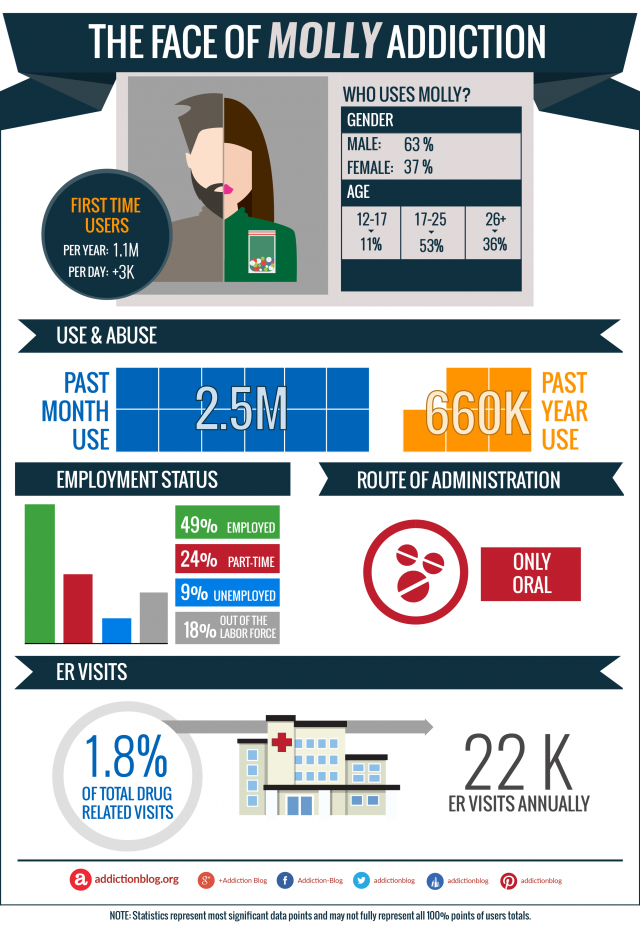Who uses Molly?
While use of Molly (ecstasy) among adolescents aged 12 – 17 has declined in recent years, use rates remains steady among adults. Still, over half a million adults surveyed in 2014 were current Molly users. Among people aged 12 or older in the same year, 0.2% used ecstasy. These percentages represent approximately 609,000 during that year who used ecstasy.
Some more statistics and demographics: An in-depth study of ecstasy users conducted in 2008, found the majority of ecstasy users to be:

- Non-Hispanic White – 73%
- Male – 65%
- Employed college graduates
- Living in large metro areas
- Have an annual family income under $40,000
Age-specific Molly use and abuse statistics
Age group 12-17 years old (adolescents)
- 1.2% of adolescents have taken ecstasy at least once in their lifetime.
- 0.7% of adolescents have taken ecstasy in the year previous to the survey.
- 0.2% of 12-17 years olds reported using ecstasy within the month previous to being surveyed.
Age group 18-25 years old (young adults)
- 12% of young adults reported using ecstasy at least one time in their lives.
- 3.5% of 18-25 years olds reported using the ecstasy within the previous year.
- 1% of young adults aged 18-25 had used ecstasy within the past 30 days preceding the survey.
Age group 26+ years old (adults)
- 6.4% of adults aged 26+ reported using the drug at least once in their life.
- 0.5% of 26+ years olds reported using ecstasy within the previous year.
- 0.1% of adults aged 26 or older reported ecstasy use within the last 30 days before being surveyed.
Ecstasy use can be dangerous
Molly use is dangerous for your physical and mental health. In 2011, ecstasy use was involved in an estimated 22,498 emergency department (ED) visits, the majority of which occurred among individuals within the age bracket 18 – 29. ED visits that involve ecstasy have more than doubled since 2004.nReports show that males represent around 70% of total ecstasy-related ED visits.
Molly use and addiction questions
Do you like our infographic and the information it contains? Please feel free to share it and spread knowledge.
If you have any additional questions about the use and addiction to Molly (ecstasy) or would like to share your personal input, we welcome you to post in the comments section below. We value your feedback and try to provide personal and prompt response to all legitimate inquiries.








Related Posts